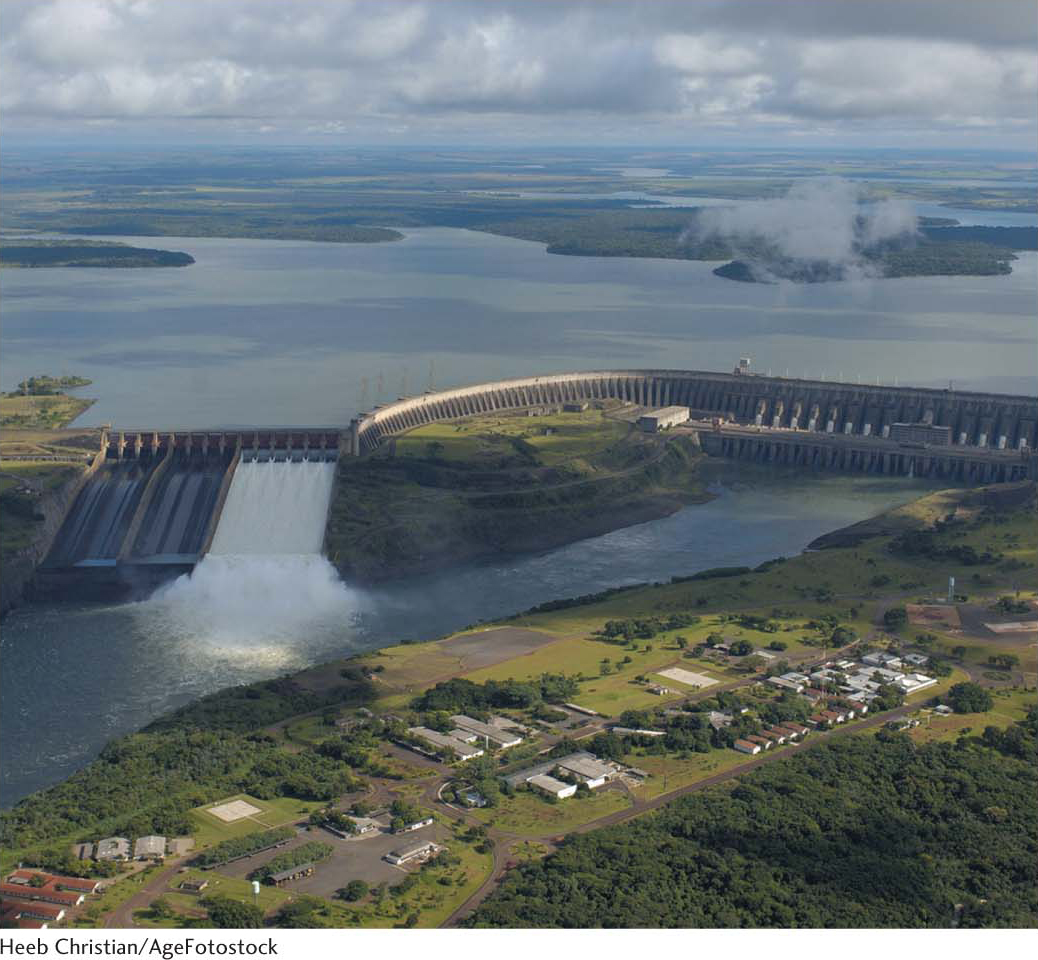
CHAPTER 21
The Proton-Motive Force
Page 383

Itaipu Binacional, on the border between Brazil and Paraguay, is one of biggest hydroelectric dams in the world. The dam transforms the energy of falling water into electrical energy. Analogously, the mitochondrial enzyme ATP synthase transforms the energy of protons falling down an energy gradient into ATP.

In Chapter 20, we considered the flow of electrons from NADH to O2, an exergonic process:

During the electron flow, protons are pumped from the mitochondrial matrix to the outside of the inner mitochondrial membrane, creating a proton gradient. Energy is thus transformed as electron transfer potential is converted into a proton gradient, an energy-
Page 384

[Leave] [Close]